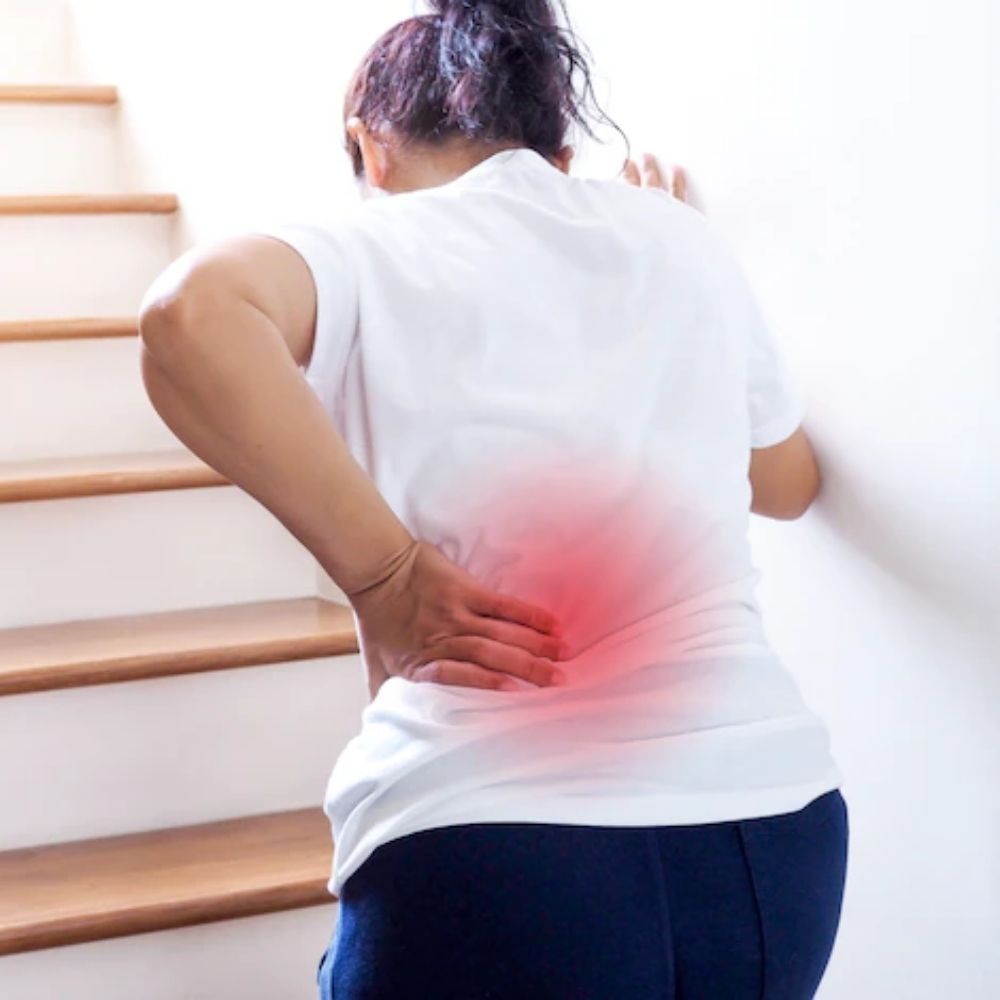If you're tired of relying solely on medication for pain relief, you might find it worthwhile to explore 90% natural pain management techniques. By incorporating mindful practices, gentle movement, and holistic remedies into your routine, you could discover a more balanced approach to managing discomfort. Consider how simple adjustments in your diet or the use of essential oils can influence your overall well-being. There's a wealth of options available, and understanding how each can fit into your lifestyle could make all the difference. What might you be missing that could enhance your journey?
Mindfulness and Meditation
Mindfulness and meditation offer powerful tools for managing pain effectively. These practices help you cultivate awareness of your thoughts and sensations, allowing you to observe pain without judgment. By focusing on the present moment, you can create distance between yourself and your discomfort, reducing its intensity and impact on your daily life.
When you engage in mindfulness, you're training your mind to acknowledge pain without becoming overwhelmed by it. Try sitting quietly for a few minutes, focusing on your breath. Notice how your body feels, and recognize any areas of tension or discomfort. Instead of resisting these feelings, accept them as part of your experience. This acceptance can diminish their hold on you.
Meditation takes mindfulness a step further. You can explore various techniques, such as guided imagery or body scans. With guided imagery, visualize a peaceful scene, allowing your mind to transport you away from pain. During a body scan, mentally travel through your body, paying attention to each part, and consciously relaxing areas of tension.
Both practices can be incorporated into your daily routine. Even just a few minutes each day can lead to significant improvements in your pain management.
Over time, you may notice that your ability to cope with pain increases, and your overall well-being improves. By embracing mindfulness and meditation, you're empowering yourself to take control of your pain and enhance your quality of life.
Herbal Remedies
Exploring natural pain management techniques can lead you to herbal remedies, which have been used for centuries to alleviate discomfort. These remedies harness the healing properties of plants and can offer effective solutions for various types of pain.
You might want to start with well-known herbs like ginger, which has anti-inflammatory properties, making it a great option for relieving muscle and joint pain. Simply brewing ginger tea or incorporating it into your meals can help.
Another powerful herb to contemplate is turmeric. Curcumin, its active compound, has potent anti-inflammatory effects. You can mix turmeric powder into smoothies, soups, or even golden milk to take advantage of its benefits.
If you're dealing with headaches, peppermint might be your go-to. The cooling sensation of peppermint oil can help ease tension headaches when applied to the temples.
For nerve pain, look into the benefits of St. John's Wort. It's been traditionally used to treat nerve-related discomfort, and you can find it in tincture or capsule form.
Don't overlook willow bark, often referred to as "nature's aspirin." It can reduce pain and inflammation, particularly in cases of back pain or arthritis.
Before diving into herbal remedies, it's wise to consult with a healthcare professional, especially if you're on medication or have existing health conditions.
Gentle Movement Practices
Incorporating gentle movement practices into your daily routine can considerably ease pain and enhance overall well-being. These low-impact activities focus on improving mobility, flexibility, and strength without putting excessive strain on your body. You don't need to be an expert; just start with what feels comfortable for you.
Yoga is a popular option that promotes relaxation and mindfulness while stretching your muscles. You can try simple poses like Child's Pose or Cat-Cow, which help relieve stiffness and tension. If you're new to yoga, consider joining a beginner class or following online tutorials to guide you.
Tai Chi is another fantastic practice known for its gentle flowing movements. It's often described as "meditation in motion," focusing on balance, coordination, and deep breathing. By practicing Tai Chi regularly, you can improve your body awareness and reduce stress, which can, in turn, alleviate pain.
Walking is also an excellent form of gentle movement. Whether you stroll around your neighborhood or take a walk in a park, the rhythmic motion can help improve circulation and lift your mood. Aim for a pace that feels comfortable, and gradually increase your distance as your endurance builds.
Don't forget about stretching! Incorporating regular stretching sessions can keep your muscles limber and help prevent injuries. Just a few minutes a day can make a significant difference in how you feel.
Acupuncture and Acupressure
Acupuncture and acupressure are powerful tools for managing pain and promoting overall well-being.
You'll discover how these techniques work, their benefits, and how to apply them safely and effectively.
Let's explore how incorporating these practices can enhance your natural pain management journey.
Benefits of Acupuncture
One powerful method for managing pain is acupuncture, a practice rooted in ancient Chinese medicine that involves inserting thin needles into specific points on the body. You might be surprised to learn how effective this technique can be for alleviating various types of pain, including chronic back pain, arthritis, and migraines.
Acupuncture stimulates the nervous system, promoting the release of endorphins, which are natural painkillers. By targeting specific points, it helps improve blood circulation and reduces inflammation, leading to faster healing. Many people report a significant reduction in pain after just a few sessions, making it an appealing option for those seeking natural remedies.
Moreover, acupuncture doesn't just address physical discomfort. It also helps to alleviate stress and anxiety, creating a holistic approach to your well-being. You might find that regular treatments enhance your overall quality of life, improving your sleep and boosting your energy levels.
If you're looking for a natural way to manage pain, consider giving acupuncture a try. It's a safe, effective method with minimal side effects, helping you regain control over your health and well-being.
Acupressure Techniques Explained
Acupressure, a technique closely related to acupuncture, involves applying pressure to specific points on the body to relieve pain and promote healing. You can use your fingers, palms, or even tools to exert pressure on these acupoints, which are believed to correspond to various physical and emotional issues.
To get started, identify the acupoints you want to target. Common points include LI4, located between your thumb and index finger, and PC6, situated a few inches above your wrist on the inner forearm. Once you've located the point, apply firm, steady pressure for about 30 seconds to a minute. You can use circular or up-and-down motions as you press.
It's essential to listen to your body while practicing acupressure. If you experience pain or discomfort, ease the pressure. You can practice acupressure daily or whenever you feel tension or pain.
Many people find it beneficial for headaches, stress relief, and muscle pain. With consistency, you might notice improved well-being and reduced discomfort, making acupressure a valuable addition to your natural pain management toolkit.
Safety and Effectiveness
When considering natural pain management techniques, understanding the safety and effectiveness of acupuncture and acupressure is crucial. Both methods have been practiced for thousands of years and are generally regarded as safe when performed by trained professionals.
Acupuncture involves inserting thin needles into specific points on the body, while acupressure applies pressure to these points using fingers or tools.
You might be wondering about their effectiveness. Research shows that both acupuncture and acupressure can provide relief for various conditions, including chronic pain, migraines, and even anxiety. Many people report significant improvements after just a few sessions. However, results can vary from person to person.
It's important to consult with a qualified practitioner to guarantee a safe and tailored approach for your needs. While side effects are rare, they can include soreness or minor bruising at the needle sites in acupuncture. Acupressure generally has fewer side effects since it doesn't involve needles.
In short, both acupuncture and acupressure offer promising options for natural pain relief. Understanding their safety profile and effectiveness can empower you to make informed decisions about your pain management journey.
Dietary Adjustments
When it comes to managing pain naturally, what you eat can make a big difference.
Incorporating anti-inflammatory foods and staying hydrated can greatly help reduce discomfort.
Let's explore how these dietary adjustments can enhance your overall well-being.
Anti-Inflammatory Foods
Incorporating anti-inflammatory foods into your diet can considerably impact your overall well-being and help manage pain. These foods can reduce inflammation, which is often at the root of chronic pain.
Start by adding fruits and vegetables rich in antioxidants, like berries, leafy greens, and sweet potatoes. These colorful choices not only nourish your body but also combat oxidative stress.
Next, consider incorporating healthy fats. Foods like avocados, nuts, and olive oil are excellent sources of omega-3 fatty acids, known for their anti-inflammatory properties. Fatty fish, such as salmon and mackerel, are also beneficial, so try to include them in your meals a couple of times a week.
Spices play a significant role, too. Turmeric and ginger are powerful anti-inflammatories that can easily be added to your cooking or smoothies.
Don't forget about whole grains like quinoa and brown rice; they can replace refined grains, providing more nutrients and fiber.
Hydration and Pain Relief
Proper hydration plays an essential role in managing pain and supporting overall health. When you're well-hydrated, your body can function at its best, which can greatly reduce discomfort. Water helps transport nutrients and oxygen to cells, aiding recovery and reducing inflammation. If you're feeling pain, you mightn't realize that dehydration could be a contributing factor.
Aim to drink at least eight glasses of water a day, but adjust that based on your activity level and climate. Don't forget that certain foods, like fruits and vegetables, can also contribute to your hydration. Incorporating foods high in water content, such as cucumbers, oranges, and strawberries, can help you stay hydrated while providing essential vitamins.
Caffeinated and alcoholic beverages can lead to dehydration, so limit these if you're dealing with pain. Herbal teas and electrolyte-rich drinks can be good alternatives.
Essential Oils and Aromatherapy
Many people find relief from pain through the use of essential oils and aromatherapy. These natural remedies can help alleviate discomfort and improve your overall well-being. By harnessing the power of plant extracts, you can create a soothing environment that promotes relaxation and healing.
To get started, consider using essential oils like lavender, eucalyptus, or peppermint. Lavender is known for its calming properties and can help you unwind, especially if you're dealing with stress-related pain. Eucalyptus oil has anti-inflammatory benefits, making it a great choice for muscle soreness. Peppermint oil can provide a cooling sensation and may help relieve headaches or tension.
You can use these oils in various ways. Diffusing them in your living space can create a pleasant atmosphere while promoting relaxation. Alternatively, you can mix a few drops with a carrier oil and apply it directly to the affected area. Always remember to perform a patch test first to avoid any skin reactions.
Incorporating essential oils into your pain management routine can be both enjoyable and therapeutic. Try creating your own blends to find the scents that work best for you. Not only will you experience potential pain relief, but you'll also enjoy the aromatic benefits of these oils.
With a little experimentation, you'll likely discover the right combination of essential oils that suits your needs, helping you tackle pain naturally and effectively.
Conclusion
By embracing these 90% natural pain management techniques, you're taking a proactive step toward a healthier, more balanced life. Mindfulness, gentle movement, and herbal remedies can transform your approach to discomfort, helping you find relief without relying solely on medication. Remember to stay hydrated and explore essential oils for added comfort. As you incorporate these practices into your routine, you'll not only manage pain more effectively but also enhance your overall well-being.



